An important consideration for prospective gecko breeders is whether they’ll be able to sell the geckos they produce. Gecko Time was curious about how successful breeders of the less common gecko species are in selling their hatchlings since they often require more specialized care than the more commonly available species such as leopard geckos. We started with the assumption that “rare” geckos would be harder to sell since the number of prospective buyers would be lower and presumably the cost of each gecko would be higher. We admit to being quite surprised at the general consensus among breeders of rare geckos as to their success in selling. The five responders all addressed the questions below:
What geckos do you breed that you would consider to be rare geckos?
How and where do you advertise them? What strategies do you use?
How successful are you in selling the offspring?
Who purchases these geckos?
How do you insure that a purchaser is going to be able to care for them?
Are there geckos you have stopped breeding because you are unable to sell them?
Kevin Mariën and Tamara Oyen
The first thing we have to ask ourselves is, what do we consider to be a rare gecko?
Since we are living in Belgium we might think a species to be extremely rare, while there might be somebody in Australia reading this that has that exact same gecko roaming the walls of their house, or have them living in their backyard.
We will limit ourselves to those that just aren’t your typical Belgium reptile store geckos so not many people here keep them, or even know they exist.
Besides our other lizards and less rare geckos at this moment we work with:
Uroplatus henkeli
Uroplatus sikorae
Uroplatus lineatus
Uroplatus phantasticus
Paroedura masobe
Ebenavia inunguis
Strophurus taenicauda
Strophurus ciliaris
Strophurus spinigerus
Strophurus krisalys
Lygodactylus grotei
Cyrtodactylus cf. pubisulcus
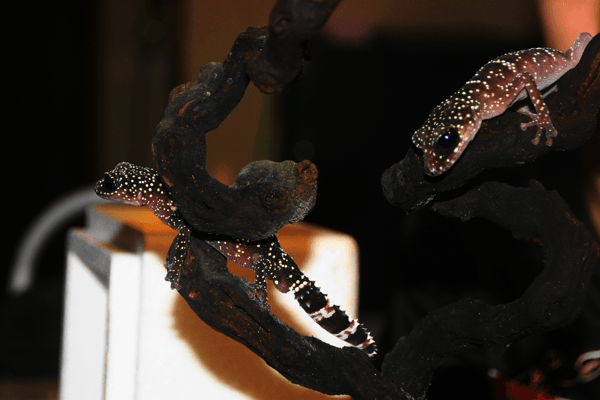
They are not all equally rare but none of them is very common here in Belgium.
As we are sure most of you have experienced as well, social media networks have made our world a whole lot smaller. There are multiple groups on Facebook where you can advertise your animals and in an instant it has spread all over the globe.
Since we started doing this most are sold even before they appear in our booth at a reptile show, which is also a way we love to sell our animals…
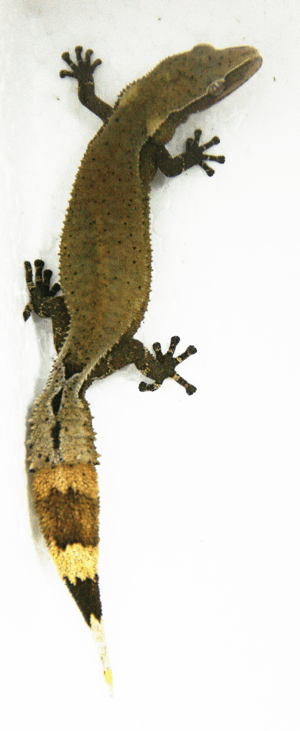
We work together with a small group of close friends that are reptile and gecko enthusiasts as well and four times a year we have a few tables at the Terraristika show in Hamm, Germany.
This is one off the world’s biggest reptile shows with visitors from everywhere. There is also a website with classified ads linked to it which is of course a great way to let people know what you have and will bring to the show, and it gives buyers the chance to make reservations if they want to.
We of course attend some other European conventions as well, and a good friend of ours owns a reptile store and sometimes we also make a deal with him if he is interested in buying some.
With the strategies we use and all the shows we attend, at this moment we actually don’t have many problems with selling or trading any of our young animals.
The reproductive rate of some of them also isn’t as high as with the more common geckos. This, along with the fact that most of them don’t get imported to EU countries results in there being very few bloodlines available. Consequently, our geckos are in high demand by European keepers.
Though we maintain a rather large collection we are also still doing this as a hobby and not to get rich very fast.
We don’t act like they are gold-plated and do not ask ridiculous prices for them, which also makes people more willing to make the deal.
Of course sometimes some stay with us a little longer but eventually they all get sold or traded, so up until this point I think we have no need to complain.
As mentioned above, most of our geckos are sold to, or traded with people that have been working with these animals themselves and are looking for new bloodlines or just a new species to add to their already existing collections.
Some of them though are of course sold to people we do not know at the reptile shows we attend.
The first thing we make sure of is that none of our animals are sold until they are atleast 3 months or older and we feel confident that they are healthy and strong enough to be going to a new owner.
If we don’t know the person that buys the animal we always give an extended care sheet with it, if possible together with some good book or website references and our personal info, so the purchaser can always get in contact with us in case they feel the need to do so.
We have stopped selling some Phelsuma and New-Caledonian species, since the demand for them just isn’t as high over here as it was when we first got them.
We still keep ours but have separated them and only put the pairs back together if somebody makes reservations to purchase a few hatchlings.
Oliver Kuepper
The geckos that would fall into the category of “rare geckos”, in my personal opinion, are: Strophurus ciliaris ciliaris, Strophurus taenicauda, Pachydactylus vanzylii, Pachydactylus rugosus, and Naultinus grayii. I’d say these are relatively uncommon in the hobby, some more so than others. Whether species like Nephrurus amyae, Nephrurus wheeleri, Nephrurus levis levis, Nephrurus vertebralis, or Pachydactylus rangei fall into this category, I am not sure. There is a fine line here. It also comes down to whether or not a species is rare in the wild. It is also important whether it is prevalent or uncommon within the gecko community. These are two completely separate matters, and something that is often discussed. There is definitely something to be said for those species that are both rare in nature, and uncommon in gecko collections.
The areas where I advertise are shifting from classifieds sites on websites like Geckos Unlimited, Fauna Classifieds, and Pangea Reptile, to isolated facebook classifieds pages. The more one plays the field, and the more one gets the classified ad out, the better one’s odds are of course. Strategies are the same as with any other reptile species. I try and list all pertinent information if possible. Things like age, sex, weight, lineage, etc. Most importantly though is the incorporation of high resolution pictures. A lot of the times people just happen to stumble across a picture of a gecko species they have never seen or heard of before and just fall in love with it.
I have never had any problems selling my offspring. As long as I am patient, and provide beautiful and healthy geckos for a fair price, they basically sell themselves. It really isn’t much different then selling a common species that the market is flooded with. Yes, there are fewer numbers of people that are interested in them, but there are also proportionately fewer offspring that are available as well. It is the opposite with the more common species where there is more competition, but there are also more customers.
There is a pretty tight group of people that are into the more uncommon species. That applies within the US, but internationally as well. Also, individuals that want something unique, something that might stand out from the “usual suspect” species that are so common on classified sites, and at reptile shows. The attributes, and behaviors of some of these uncommon species is also very interesting and appealing. Usually it is those that already have experience with the more available species that divert and trickle in to the market for the rarer of species. Some of these species can be considered somewhat of an acquired taste if you will.
There really is no way to insure 100% that a buyer will be able to care for the gecko purchased. The only thing I can do personally is to be as open about my care and husbandry as possible. I can shed light on my experience, and what has worked or not worked with me. I can be available to answer any questions along the way as well. I can provide the information, but whether the purchaser will follow that or not is out of my control.
There are many reasons that I have stopped breeding a specific species, but the inability to sell them has never been a sole reason. It may have influenced an already swayed opinion to move away from a particular gecko, but monetarily, I have not eliminated any species from my care because of this alone. In my case it has been the opposite. I generally will not stop pairing a species that is producing either. If a species cannot sell at a given price, then perhaps the perceived market value is unrealistic.
Han Ning
I breed super crimson Phelsuma grandis, which are commonly referred to as Madagascar giant day gecko. There are some wild P. grandis living in Florida and people catch them to start their breeding projects. However, most of the wild P. grandis are not the same as what I breed, because these wild geckos don’t have lots of red patterns on their backs. All of the P. grandis I breed are Super Crimson: they have a lot more reds than the common P. grandis. Another amazing feature of my super crimsons that make them so rare is that they all have the blue blood gene. In nature, the blue blood gene can be good or bad, so the ones with the blue blood gene may or may not have the ability to turn to blue. This gene is an asset when a day gecko wants to be noticed by the others, however it can be a liability because not being green is dangerous in Madagascar. Captive bred reptiles are not in danger from predators and uniquely colored specimens can enhance the interest among enthusiasts and investors. A super crimson and blue-blood P.grandis is very rare in the market.

In order to sell my geckos, I advertise on Instagram, Craigslist and FaunaClassifieds. I post photos of my animals on Instagram where I can tell how much people like giant day geckos through the volume of their comments, questions and Likes. More importantly, I can improve my public awareness among reptile enthusiasts. One drawback is that my post on Instagram may only be seen by my followers, so I can’t efficiently sell to potential buyers who do not have Instagram accounts. To solve this problem, I use Craigslist and FaunaClassifieds as main methods to post actual advertisement and look for true buyers.
My two main strategies for advertising are using photos and being honest.In my ads, I don’t usually write a long description about the gecko I’m selling because I believe the bare descriptions can’t give buyers enough confidence to understand what they will get . Instead, I mainly use photos to display as many details of my geckos as possible in order to let buyers know what the geckos look like. Being honest is another key feature of a successful breeder. I always tell the buyer if there is any problem or concern with the gecko before taking the payment. Dishonesty will not only hurt my reputation, but also might cause the death of animal because of the misinformation and inappropriate handling.
I did pretty well in selling the offspring in 2014. My super crimson pair laid a couple of infertile eggs in the spring of 2014 but eventually 8 fertile eggs were produced and all hatched. Just like I mentioned earlier, super crimson P. grandis are pretty rare in the market, so the demand is high. Thus I sold all of the hatchling and an adult pair in a month. I would say it was a successful year.

I don’t simply sell these geckos to make money, I want all my buyers to be fully knowledgeable about taking care of the geckos they buy. Some of my buyers are professional breeders, so there is nothing I need to worry about. If that’s not the case, I always let the buyers know what needs to be done before I ship the geckos to them. Also, I’m willing to provide my contact information to all my buyers for any questions they might have in the future to insure they take good care of their animals.
I’m not a professional breeder and I don’t have a large collection. I easily sold all the geckos I have bred so far and I don’t see any need to stop breeding because of the weak demand.
Matthew Schaefer
We primarily produce Phelsuma, but also work with Lygodactylus, Rhoptrophus, Strophurus, and a few other genera. There are roughly a handful of Phelsuma species still exported from their native ranges, so most species are rare in collections in the United States, though some are certainly more rare than others. We have focused on breeding rare species from the Mascarene Islands, namely Phelsuma inexpectata, Phelsuma cepediana, Phelsuma guimbeaui, Phelsuma borbonica spp. by replicating their natural history in our husbandry and by working cooperatively with other keepers. In addition, we have offered Phelsuma klemmeri (which appear to be established again), Phelsuma robertmertensi, captive-bred Phelsuma quadriocellata quadriocellata, Lygodactylus williamsi, and other species that are not as rare as the aforementioned. In the near future, we hope to offer Phelsuma breviceps, Phelsuma barbouri, Phelsuma sundbergi sundbergi, Phelsuma ornata, and a few other exciting species!
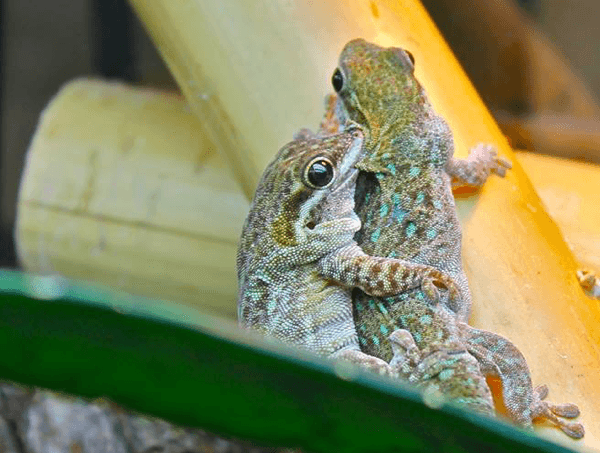
We advertise on a number of online fora and classifieds sites, including www.kingsnake.com, www.faunaclassifieds.com, www.geckosunlimited.com, and www.dendroboard.com. We often advertise on our Facebook page, Reunion Reptiles, and have found that to be a very effective platform for posting pictures, sharing information, and connecting with other keepers, both in the United States and abroad. We regularly post our present Phelsuma availability list, pricing, and related photographs on the sites, our page, and in any groups related to rare herpetofauna or Phelsuma that we belong to. Our most effective and rewarding approach has been getting to know other hobbyists, enthusiasts, and researchers and helping them determine which species would be a good initial or subsequent addition to their collection.
Although there is some seasonal and annual fluctuation in interest for the more readily available species, the rare species are often traded or sold before they are posted. There is significant interest in these species, so we often have a waiting list on pairs, sexable animals, and juveniles. We enjoy offering unrelated (unless otherwise stated), well-established animals with lineage history and find that keeping excellent records promotes sales and trades with others. When posted, these animals sell quickly, sometimes within minutes or hours.
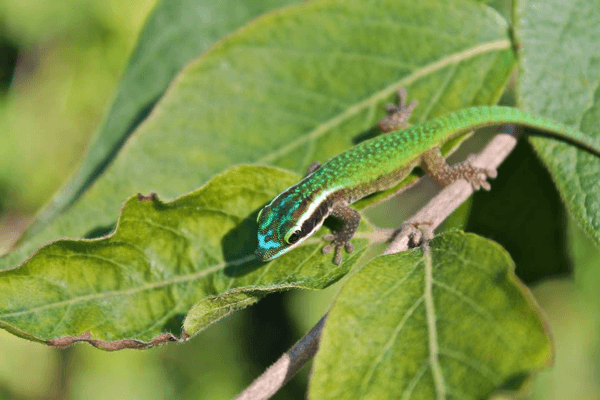
Other Phelsuma hobbyists in the United States most often acquire geckos from us, but we have sent animals to institutions, researchers, and individuals who are new to working with the genus. Most of these keepers possess extensive experience in keeping sensitive or rare animals. There is significant interest both within the United States and abroad. Beginning in fall 2014, we began selling and making arrangements with keepers in other countries.
If a purchaser is new to working with Phelsuma or a specific species, we encourage them to learn as much as they can about the natural history of the animal and aim to replicate that in their captive husbandry. We then make sure they understand basic Phelsuma husbandry and provide any information particular to the species, encouraging them to obtain valuable reference books like Day Geckos in Captivity by Leann and Greg Christenson, Geckos: Day Geckos, Tokay geckos plus New Caledonians and More! edited by Julie Bergman, and Day Geckos (Professional Breeders Series) by Frank Bruse, Michael Meyer, and Wolfgang Schmidt. We want the purchaser to understand any nuances or challenges concerning the species and how to breed them, which is especially important due to the rarity of the animals. We can be selective in who we sell or trade with as we want to ensure the species is a good fit for the keeper, that the keeper will enjoy the species (as some of the most beautiful and desired Phelsuma are the most challenging), and that we have the opportunity to work together long-term for the good of the species in US captive collections, if applicable. We keep in close contact with individuals who have obtained rare species as we want to provide ongoing support when new challenges or opportunities arise.
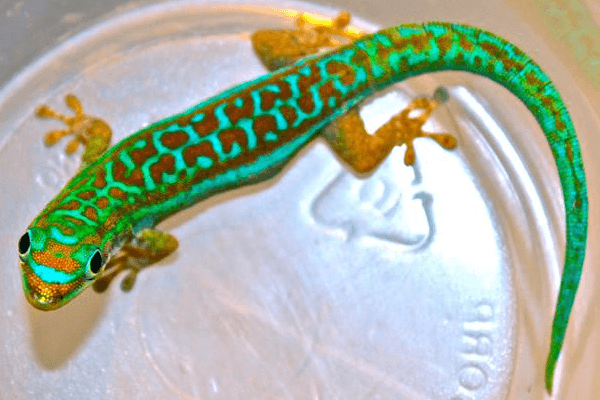
We have not stopped breeding any species, but have cut back on the numbers of Phelsuma abbotti checkei, Phelsuma kochi, Phelsuma laticauda laticauda, Phelsuma madagascariensis (not grandis), Phelsuma sundbergi ladiguensis, Phelsuma standingi (at times), and a few others. We simply do not pair as many animals, do not hold as many back, offer offspring in other shipments, and send off or loan animals out. Phelsuma are too enjoyable to keep us from breeding a particular species, but we may not devote as much attention to producing a certain species. The availability of some species has fluctuated significantly in the hobby/ market and certain animals have either vanished from collections or are precipitously close to it. Therefore, we always encourage captive breeding, albeit in limited numbers, at times, in our personal collection.
Kevin Cantrell
“Rare” is an extremely subjective term. To me, rare is anything not often seen offered publicly. Far too often reptile keepers will confuse rare with valuable, when that’s not always the case. These same people also tend to collect based on rarity and not what they actually like. As a result, you see the same individuals searching for a rare species, only to be selling said species 2 months later when they lose interest. I call these people, “reptile keepers” as opposed to hobbyists, enthusiasts, or herpetoculturists for that very reason.
I personally keep a modest collection of 28 species of Gekkotans comprising 13 genera from all over the world, but mostly Australia and New Caledonia. In addition, I keep 5 species of Asian and Middle Eastern Caudates and a few random Anolis and Agamids. The vast majority of what I keep could be considered rare, or at the very least, uncommon. I also still keep several extremely common species, though, and they tend to still be some of my absolute favorites.
Choosing to start breeding rare geckos, or any rare reptile, for that matter, first starts with choosing to keep rare geckos. If you’re interested in keeping and breeding something a little more off the beaten path I’d heavily recommend starting with a species you already know and love, then maybe do some research into it’s rarer relatives. For example, say you already keep Leopard geckos, maybe try your hand at some of the rarer Eublepharis species, or if you’re feeling wild, Goniurosaurus. If that route isn’t for you and you already have your heart set on some rare or obscure species you’ve seen a photo of, then make sure you research the species well and talk to other hobbyists that have kept it before – and don’t just go by the opinion of the guy selling them!
I’ve found the best way to buy and sell rare geckos is in dedicated Facebook groups or Internet forums. The rare gecko community is fairly tight knit, but welcomes bright newcomers with open minds and positive attitudes. Typically these are the people looking to buy rare species and potential shoppers typically find their way into the crowd. When posting ads make sure to use the correct scientific name, and have all the pertinent data on hand (age, sex, gram weight, etc.). Good, recent photos on a decent background also go a long way. Being knowledgeable about the species and being willing to spend some time educating potential buyers about them also really helps; we’re all freshmen at some point and this both helps with sales and is a step towards making sure the geckos you sell will receive proper care in the future. Another word of advice, don’t try to create a market for them using hype or ridiculous names in order to sell them, as many serious buyers will see right through this.
One of the drawbacks to breeding rare geckos is that they can be difficult to sell. Sometimes it’s due to higher price, and other times to lack of public interest. Many geckos that are rare in the hobby today are easy to keep and breed well with proper care, but because the market is not there for them, many keepers do not actively try to ramp up production of them, so to speak. Please keep this in mind when you start thinking that you ‘need’ a huge group of the animals you’re setting out to breed. Over the years I’ve seen newcomers with little foresight obtain a relatively large group of a rare gecko, only to succeed well in breeding them, then not be able to sell that many babies at fair market value. The end result is always the breeder “dumping” their surplus at a fraction of fair pricing and hurting the market. Whatever you do, don’t be that guy! I avoid this by only keeping the species I truly like and by only actively breeding and incubating the eggs of the species I know I can sell.
About our Contributors
Kevin Mariën and Tamara Oyen are private hobby breeders from Belgium. They are 34 and 28 years old. They both have been keeping reptiles since their youth but for a little over 4 years now their main focus is on chameleons, Abronia and of course geckos.
Most of their gecko collection are species from Madagascar, Australia and New-Caledonia but they also keep some other, mostly Asian and African species. When they are not working with reptiles they enjoy traveling and exploring new cultures, riding motorcycles and playing darts.
Oliver Kuepper has been fascinated with animals since a young kid, and has been working with reptiles since the early nineties. Out of New Jersey, he specializes in exotic reptiles, and runs a blog (http://rawdogreptiles.blogspot.com).
Han Ning originally come from China. He came to the U.S. in 2008 as a college student in Iowa. Ning spend four years finished his bachelors degree and relocated to Boston, MA in 2012 for graduate school. Ning is an animal enthusiast; his collection has included insects, salamanders and tortoises in the past and now he is specializing in geckos. Ning works with crested geckos and P. Grandis. He has successfully bred super crimson and blue-blood day geckos which is very rare to see in the market. Ning really enjoys sharing his experiences of being with these amazing animals and he loves to help others with taking care of their reptiles.
Matthew Schaefer and his young family own Reunion Reptiles, which is named after Reunion Island, home to some of their favorite Phelsuma. At a very young age, Matthew began observing wild and collecting captive herpetofauna. His God-given passion for wildlife, especially lizards, led him to complete his formal education in biology and pursue further opportunities in cell biology, conservation biology, and ecology. Though intensely focused on working with Phelsuma, the Reunion Reptiles family is also enchanted with imperiled Ctenosaura and other rare lizards. Matthew and his family are grateful to the many pioneers and friends who have helped them acquire rare animals and have provided valuable information concerning their natural history. Please check out their Facebook page, Reunion Reptiles, to join the discussion and promote successful captive husbandry!
Kevin Cantrell’s life with reptiles started at a young age. As soon as he could walk he was following around his father’s desert tortoises (Gopherus agassizii) and catching fence lizards (Sceloporus occulatus ssp) in the fields near his house. He started keeping reptiles on his own at age 7 and started breeding geckos at the age of 12. Kevin has worked with many reptiles over the years including many agamids, iguanids, chameleons, tortoises, snakes and over 80 species of gecko.
Kevin has been focusing primarily on geckos since 2006 and founded Passport Herpetoculture in 2008. He currently maintains a modest collection of around 30 species of gecko from all over the world and comprising over 10 different genera. He also has a strong interest in Caudates. Outside of herpetoculture he is an avid hiker and rock climber and vintage car enthusiast. He also maintains a humble greenhouse with roughly 200 species of Aroids and Ferns. For more information on Kevin, his collection, available offspring and surplus geckos, please visit him at his website, or on Facebook.


nice pix
Wooooooooooooooooooooooooow Nice ♥
those are some amaizing creatures, good job on producing them!
Hello
P. Masobe is a dream species for me do you know where to purchase any from?
Check out this link: http://www.supremegecko.com/new-animals-more-paroedura. Contact Wally Kern who wrote the article in the link and his suggestion of Jon Boone.